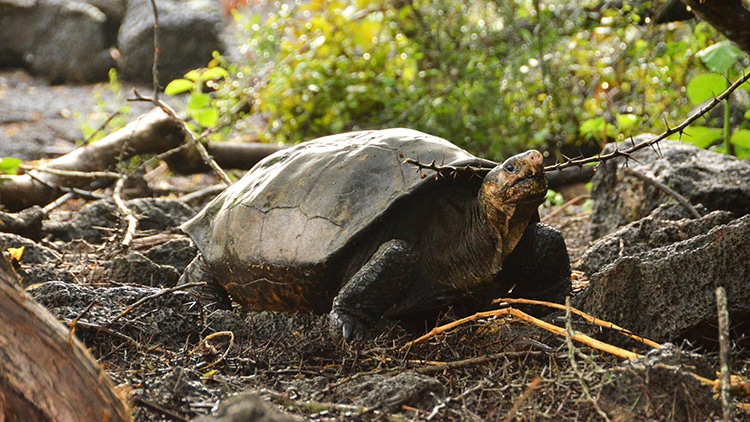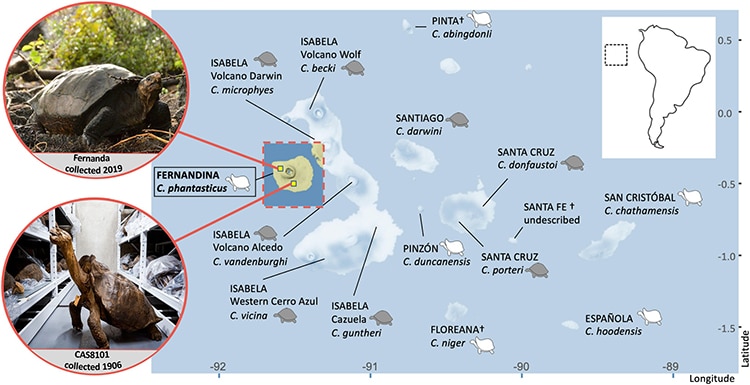
Fernanda, the Fernandina giant tortoise, at the Galapagos National Park. (Photo: Galápagos Conservancy)
In 1906, researchers from the California Academy of Sciences captured (and stuffed) a giant tortoise. The male critter had roamed Fernandina Island, one of the islands of the gorgeous Galápagos. Known scientifically as chelonoidis phantasticus, the poor reptile was thought to be the last of its species—magnificent, ancient, yet extinct. However, after a century of tantalizing clues, biologists have shocking news. The species, whose name is Latin for “fantastic giant tortoise,” is not extinct. A single female has been discovered in her forest home, offering the possibility to pull a species back from the brink.
The tortoise was discovered in 2019, but only recently were her genetics confirmed in writing. The female had been enjoying her life in a patch of dense vegetation on Fernandina Island, where scat sightings and tree bites had long indicated tortoises might remain. Researchers named her Fernanda. Her DNA was collected and compared to the 1906 specimen. Much to everyone’s surprise, Fernanda was found to belong to the once-extinct “fantastic” species. This exciting news was published in Communications Biology. “We saw—honestly, to my surprise—that Fernanda was very similar to the one that they found on that island more than 100 years ago, and both of those were very different from all of the other islands’ tortoises,” said Princeton University researcher and paper author Stephen Gaughran in a statement.
While her species has not been documented in over a hundred years, Fernanda herself is middle-aged. The experts estimate she is over 50 years old, but her species can live up to 80 to 120 years. Her growth may have been stunted by limited food. Clearly, her species is extremely endangered. Of the 14 different species of giant Galápagos tortoises, all are vulnerable, endangered, or extinct. Finding Fernanda is not only a great surprise, but a once-in-a-generation chance to save a species. “Are there more tortoises on Fernandina that can be brought back into captivity to start a breeding program? How did tortoises colonise Fernandina, and what is their evolutionary relationship to the other giant Galápagos tortoises?,” asks senior author Adalgisa Caccone of Yale University.
Fernanda now lives in the Galápagos National Park’s Giant Tortoise Breeding Center on Santa Cruz Island. Researchers and conservationists hope that further research and exploration may reveal a way to breed the species in captivity. Fernanda may be as “fantastic” as her scientific name suggests. She may be the missing link which preserves an ancient species.
Fernanda, the chelonoidis phantasticus or “fantastic” giant Galápagos tortoise, is the only known member of her species. The species was thought to go extinct in 1906.

Map of Galápagos tortoises. (Photo: Wikimedia Commons, CC BY 4.0)
Scientists from Princeton and Yale discovered Fernanda was related to the 1906 specimen, and the last link to a vanishing species.
h/t: [Euronews]
Related Articles:
Disabled Tortoise Can Finally Move Around Thanks to His New Custom Wheelchair
Family’s Pet Tortoise Missing for 30 Years Is Found Alive and Well in the Attic
Rare Baby Galápagos Giant Tortoise With Albinism Is Born at Swiss Zoo
Jonathan the Giant Tortoise Turns 190 Years Old, Making Him the Oldest Tortoise Ever
